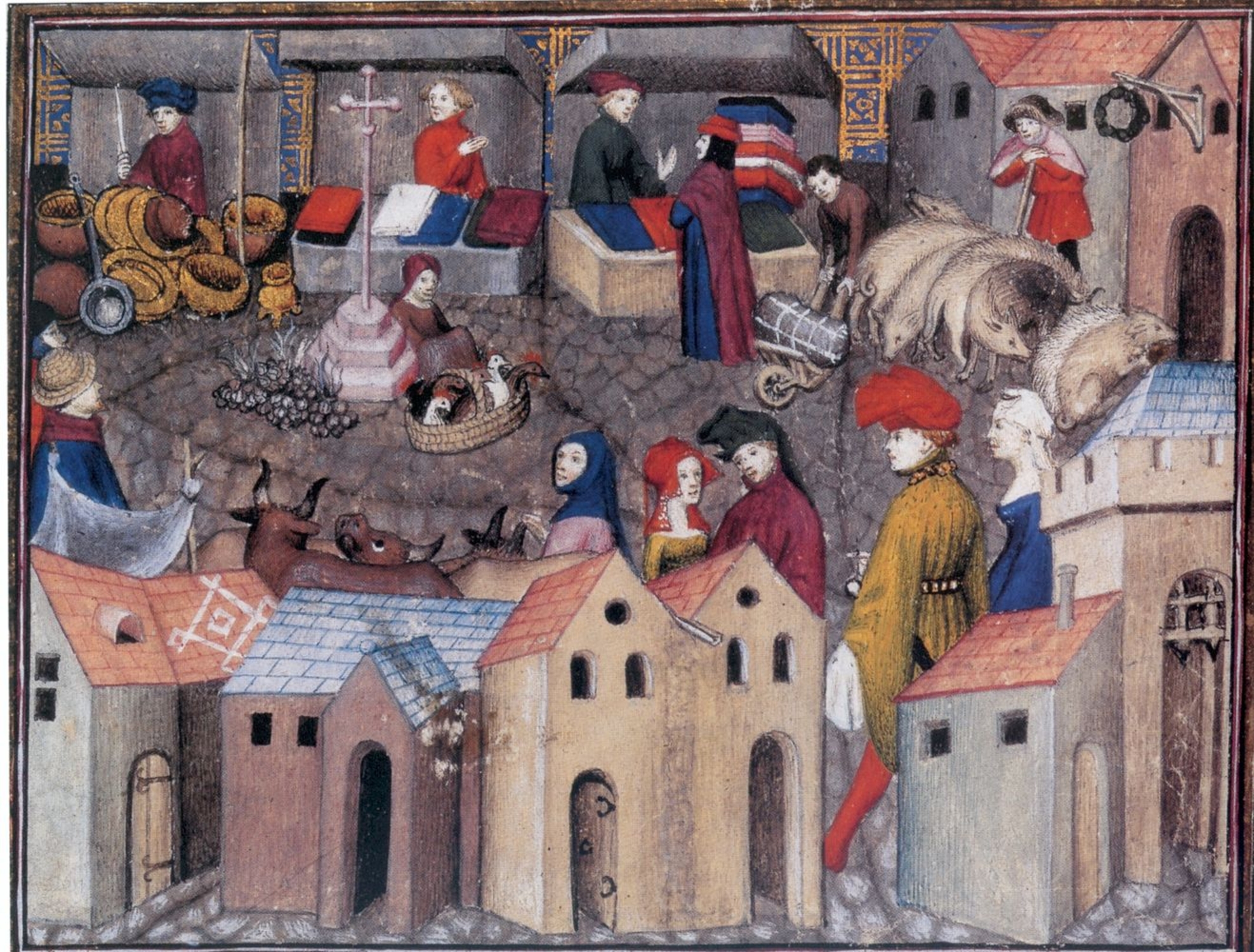- Home
- Crafts and daily life
- Saint-Denis's markets and fairs
- The Place Panetière and the covered markets
Layout of the Place Panetière and the fair stalls.
© UASD
The first mention of the trading role of the Place Panetière, located at the foot of the basilica1, is found in the writings of abbot Suger (1122-1151), who speaks of a place where "everything to buy or sell may be found". In fact, throughout the Middle Ages, "La Panetière" was the spot where bread was sold twice a week.
Covered markets were erected around the edges of the Place, and their upkeep was the responsibility of the abbey. These included a textile and draper's market, a market for furriers, linen vendors and secondhand clothing dealers, and one for leatherworkers, shoemakers and cobblers.
Starting with Clovis II (639-657), the Place Panetière (Panetière square) was the site of the Saint Denis fair and -from 1053 onwards- that of the Lendit fair. Four centuries later, the Lendit fair was moved back to the Place from La Plaine, where it had been located since 1124. From then on, shopkeepers set up permanent stalls that the monks had constructed within the covered markets.
The fair took place along streets that took their names from the towns from which draper merchants came: the Rue de Vire, Petite and Grande rue d'Amiens, Rue de Rouen, Rue de Beauvais, and the Rue de Dreux. Trading that took place in the covered markets continued to spill out onto the Place and into adjacent streets.

